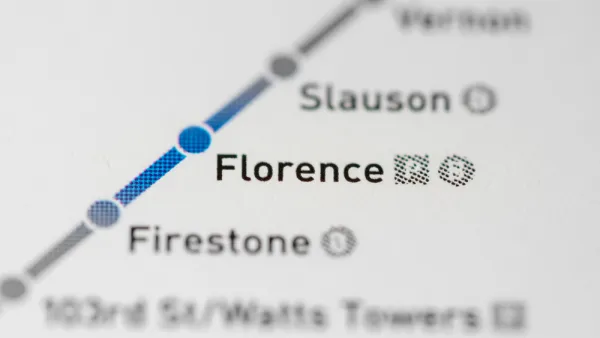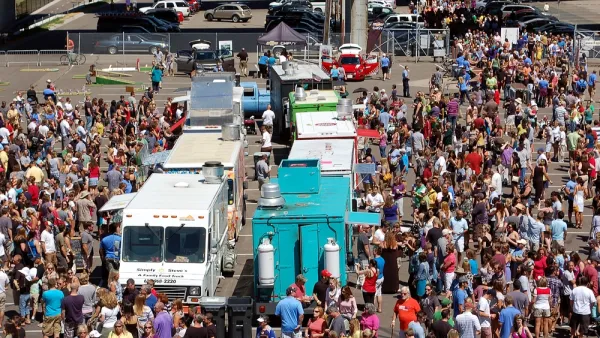A new paper in the Regional Science and Urban Economics journal presents a lukewarm review of the Minneapolis Blue Line’s impact on development through 2010—doing little to buoy the market during the Great Recession.
Adam Belz reports on a new paper by Sarah West and Needham Hurst that will be published in Regional Science and Urban Economics finding that the Blue Line created “almost no increase in the likelihood of new development up to 2010” for the lights rail line that has connected Downtown Minneapolis and the Mall of America since 2004.
To sum the paper’s lackluster review of the development impact of the line: “They found ‘no effect’ along the corridor compared with the 1997-2000 period before construction started on the rail line, and found that parcels within a half-mile of rail platforms were only 1.39 percent more likely than parcels citywide to be developed after the line started operating, compared with the years the rail line was under construction.” For the record, the new report’s findings contradict the narrative about the rail line’s impacts from 2006.
“The paper also finds that light rail failed to insulate the corridor from the effects of the Great Recession,” writes Belz. A quote from West furthers that point: “If the light rail has a catalyst effect, we would still expect for there to be relatively less of a hit taken within the corridor, and we don’t find that…”
In the period following the paper’s purview, anecdotal evidence seems to suggest that the corridor’s stagnancy is improving. “West and Hurst are careful to point out that their paper does not address development since 2010 — ‘casual observation of activity along the line in 2012 and 2013 suggests that substantial changes are taking place now that market outlooks have improved,’ they wrote — and that the effects of light rail can take a long time to manifest themselves.”
Belz cites the study as a cautionary tale ahead of the soon-to-be-completed Green Line, which will shuttle riders between Downtown Minneapolis and St. Paul.
FULL STORY: Study says Blue Line's development impact is minimal

Analysis: Cybertruck Fatality Rate Far Exceeds That of Ford Pinto
The Tesla Cybertruck was recalled seven times last year.

National Parks Layoffs Will Cause Communities to Lose Billions
Thousands of essential park workers were laid off this week, just before the busy spring break season.

Retro-silient?: America’s First “Eco-burb,” The Woodlands Turns 50
A master-planned community north of Houston offers lessons on green infrastructure and resilient design, but falls short of its founder’s lofty affordability and walkability goals.

Test News Post 1
This is a summary

Analysis: Cybertruck Fatality Rate Far Exceeds That of Ford Pinto
The Tesla Cybertruck was recalled seven times last year.

Test News Headline 46
Test for the image on the front page.
Urban Design for Planners 1: Software Tools
This six-course series explores essential urban design concepts using open source software and equips planners with the tools they need to participate fully in the urban design process.
Planning for Universal Design
Learn the tools for implementing Universal Design in planning regulations.
EMC Planning Group, Inc.
Planetizen
Planetizen
Mpact (formerly Rail~Volution)
Great Falls Development Authority, Inc.
HUDs Office of Policy Development and Research
NYU Wagner Graduate School of Public Service




























